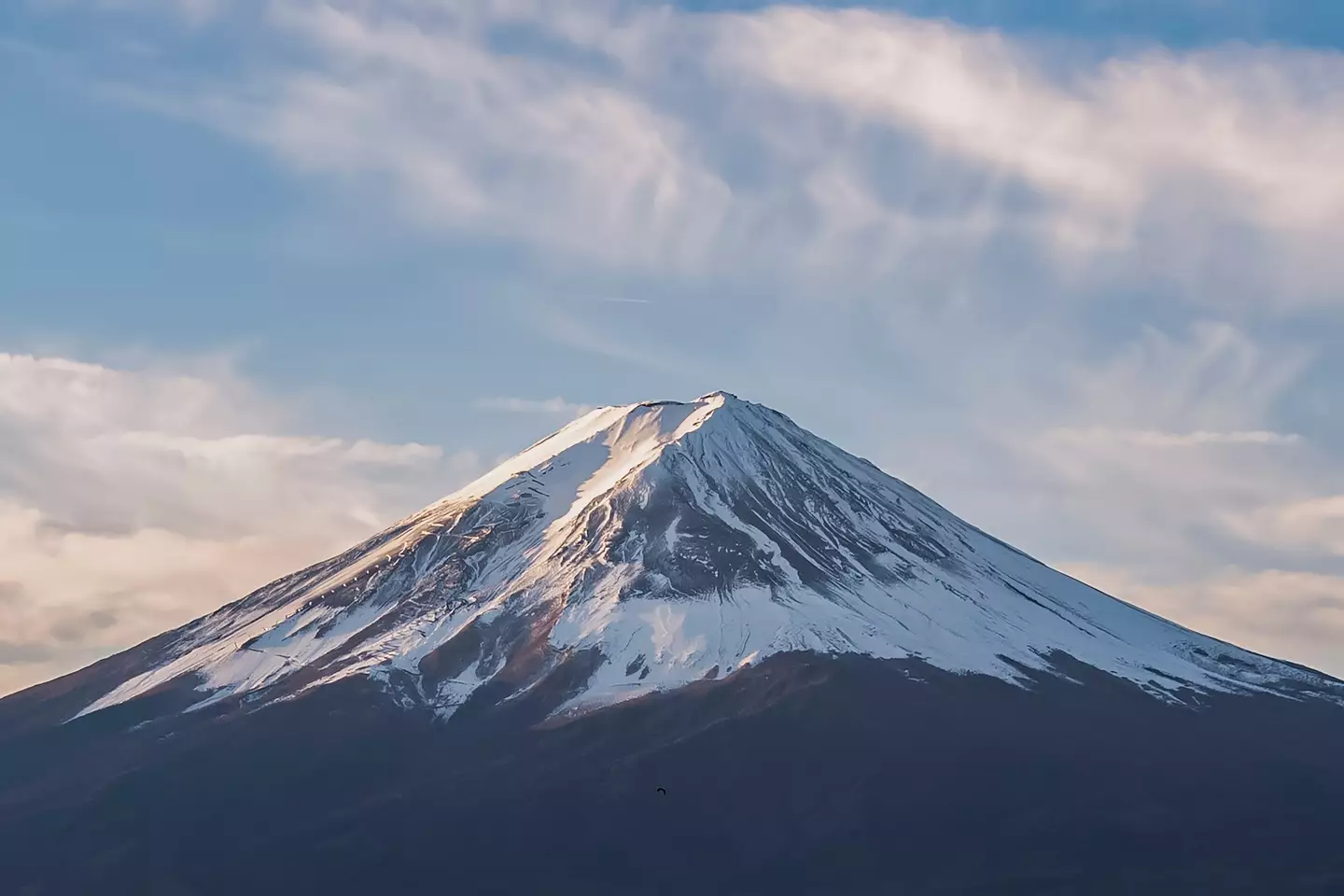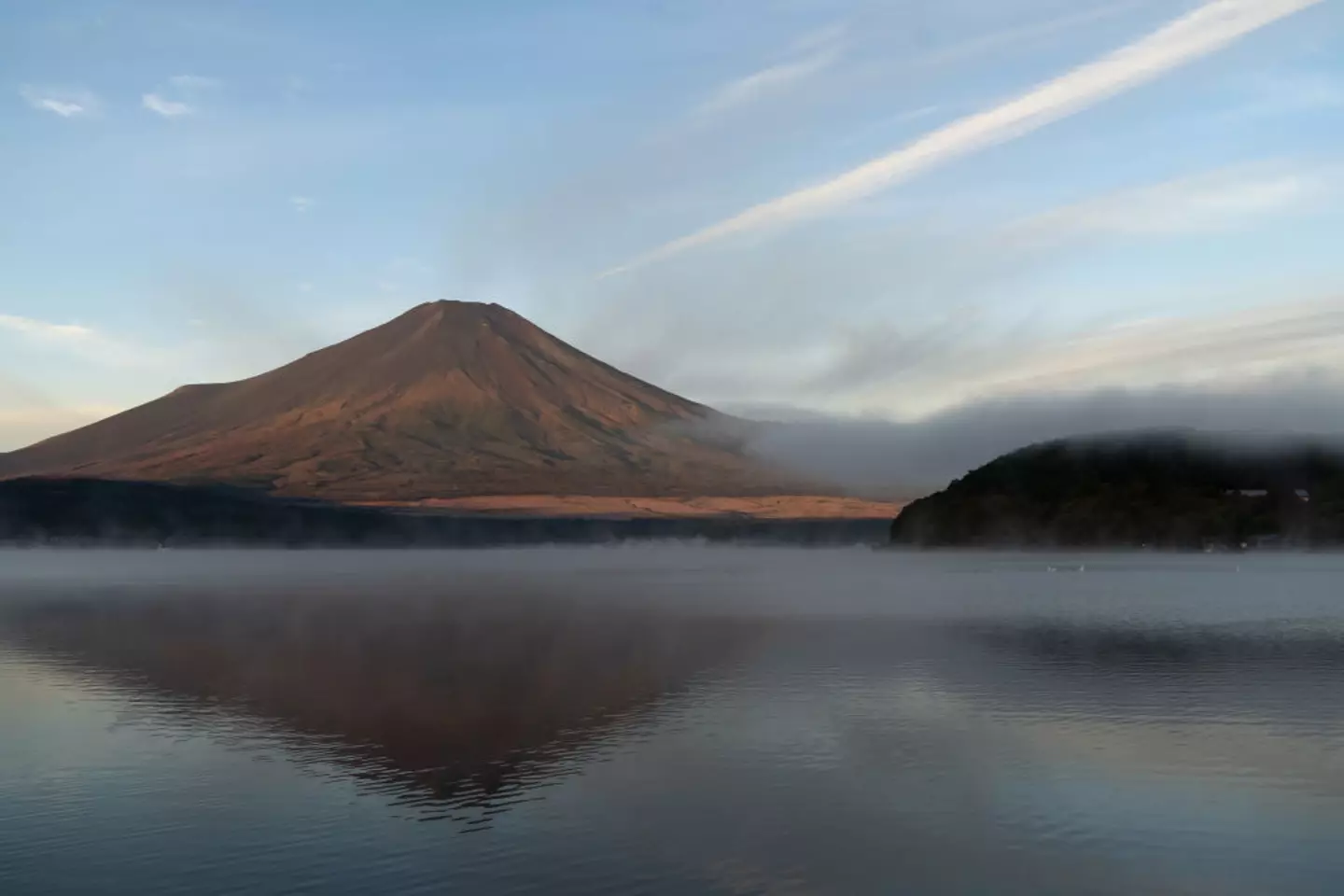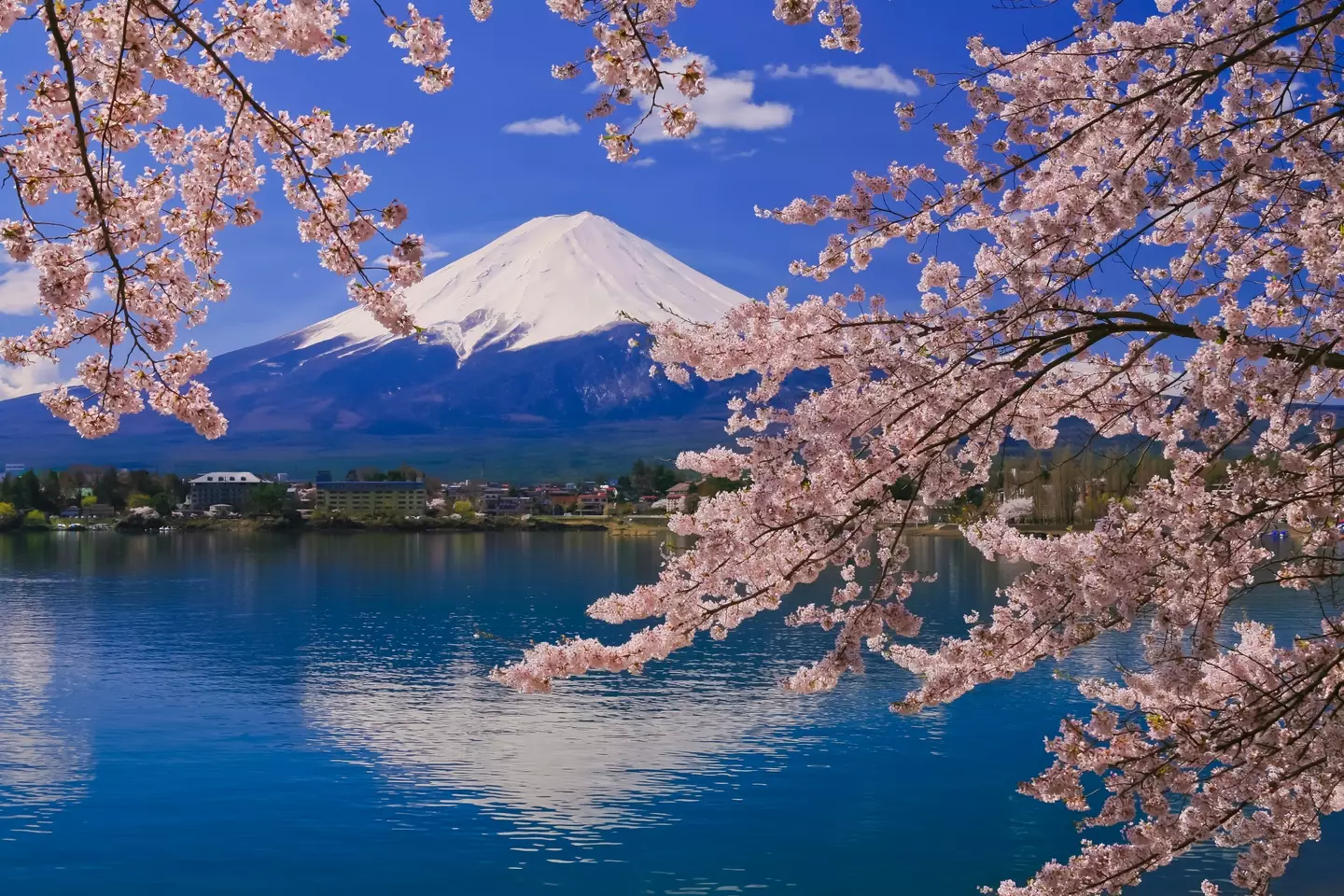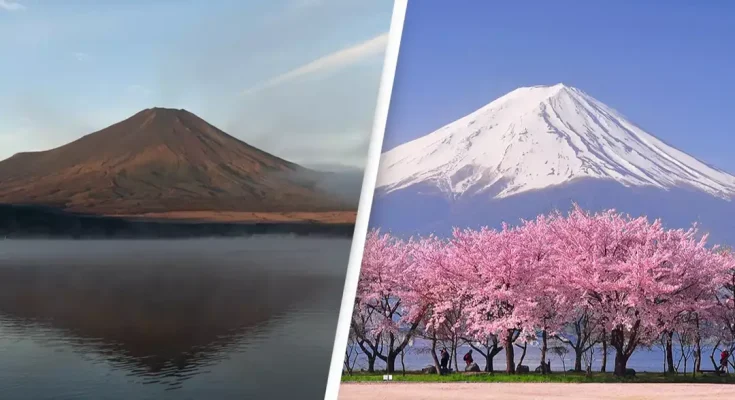Experts have been left concerned by the lack of snow on Mount Fuji this year
Mount Fuji is one of the most famous landmarks on the entire globe, but it appears to be evolving in a not so good way.
Climate change is a hugely controversial topic, one that seems to provide a lot of disagreement on social media and the rest of the web. But the impacts of global warming have perhaps never been so apparent when you look at the state of the Japanese famous landmark Mount Fuji.
Typically by the start of October, Japan’s highest mountain has a cover of snow covering its impressive peaks, but this is certainly not the case this year.

Mount Fuji has no snow this year (Getty Stock Photo)
CNN reports that as of Tuesday (29 October), the summit of Mount Fuji remained bare, leading to many questioning the impact climate change is having on our planet.
Japan’s weather agency state that snow beings to land on Mount Fuji on average on 2 October, with the first sign of snowcaps confirmed as being on the 5 October last year.
But Japan’s Kofu Local Meteorological Office is yet to make such an announcement this year, which comes as a massive surprise considering the hiking season ended in the region back in September.
The weather experts have cited unusual warm weather as a contributing factor to the lack of snow.

Mount Fuji pictured today, 31 October (Tomohiro Ohsumi/Getty Images)
Meteorological officer at the Kofu office, Shinichi Yanagi, told CNN: “Because of the fact that high temperatures in Japan have been continuing since the summer and as it has been raining, there has been no snowfall.”
Climate Central has concluded that the usually hot October heat Japan has experienced is most likely because of the ongoing climate crisis.
The El Niño pattern is a major contributor to increases in temperatures across the planet, with many deeming it the most important factor to the changes we are seeing.
The El Niño Southern Oscillation, as it is properly called, has three different phases: hot, cold or neutral.
The weather effect is the most powerful fluctuation in the entire climate system, likely causing the lack of snow presence on Mount Fuji.

This is what Mount Fuji should look like at this time of year (Getty Stock Photo)
Essentially, the weather event sees additional heat welling up to the surface of the Pacific Ocean, subsequently pushing up global temperatures in the process.
Scientists have warned for a long while now that unless action is taken to reduce carbon emissions as soon as possible, then we are likely to see a further increase in temperatures in the years to come.
Maybe we’ll even see the day where absolutely no snow appears on Mount Fuji.



